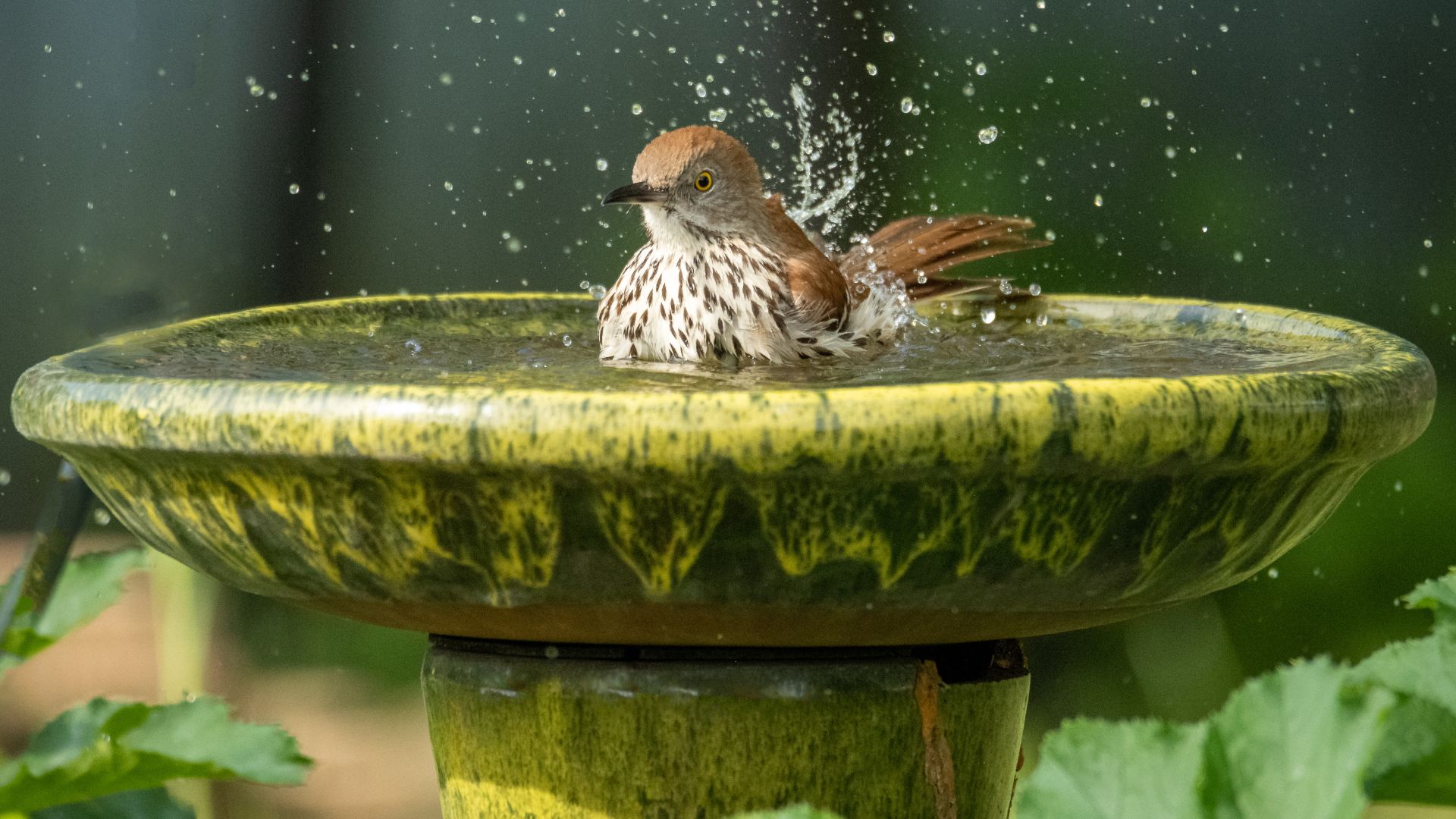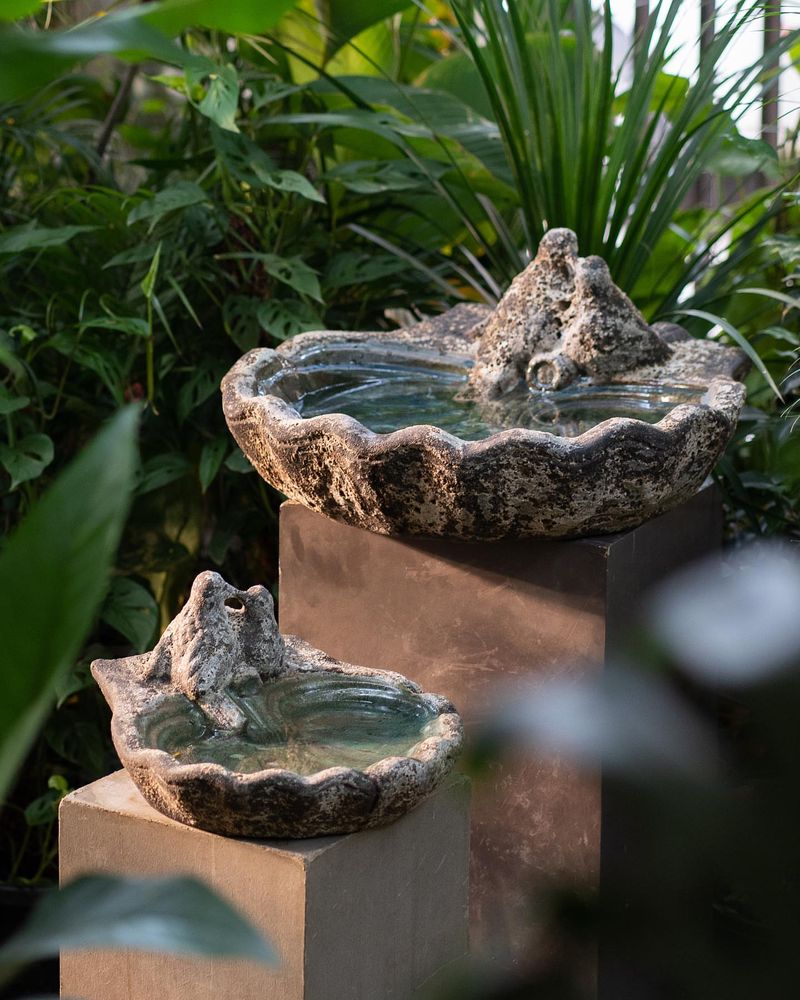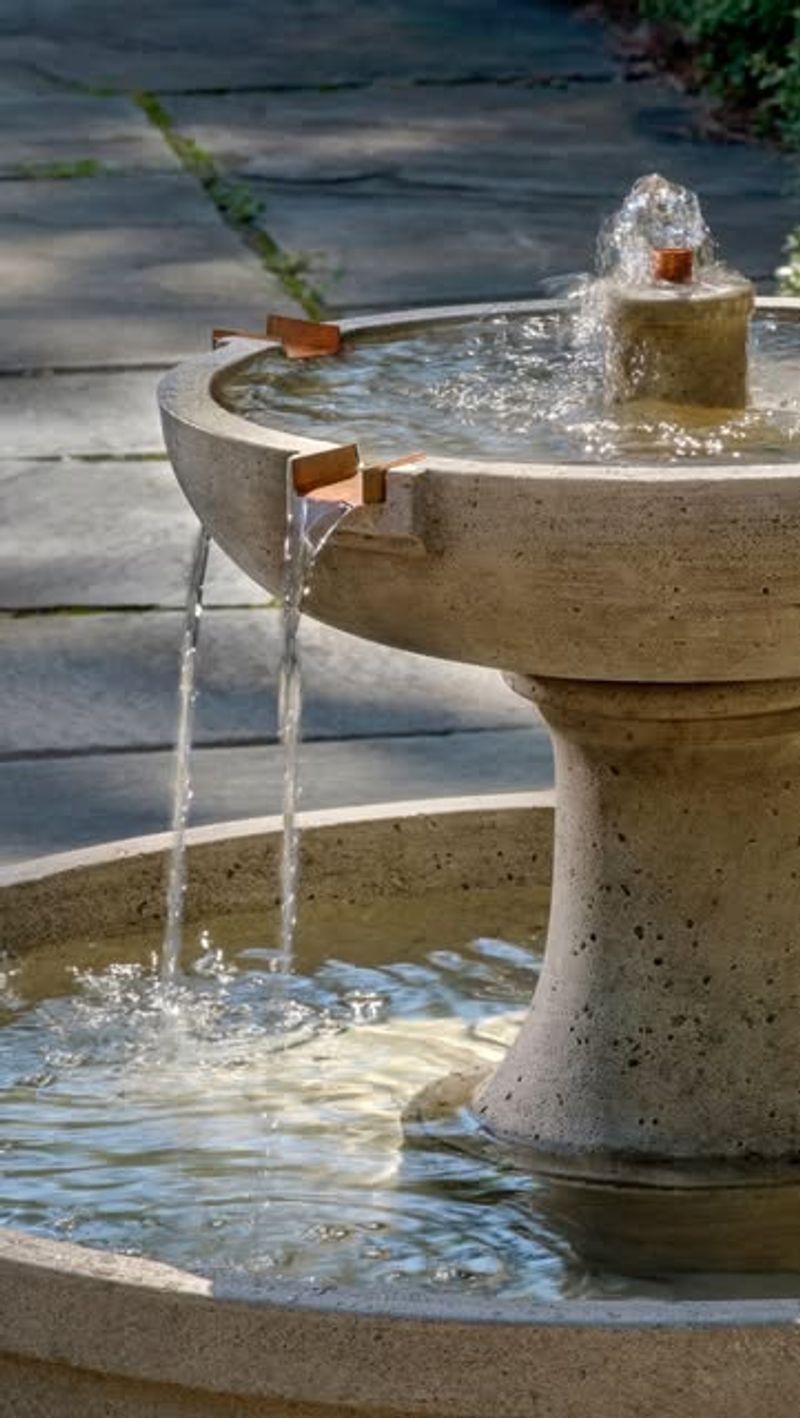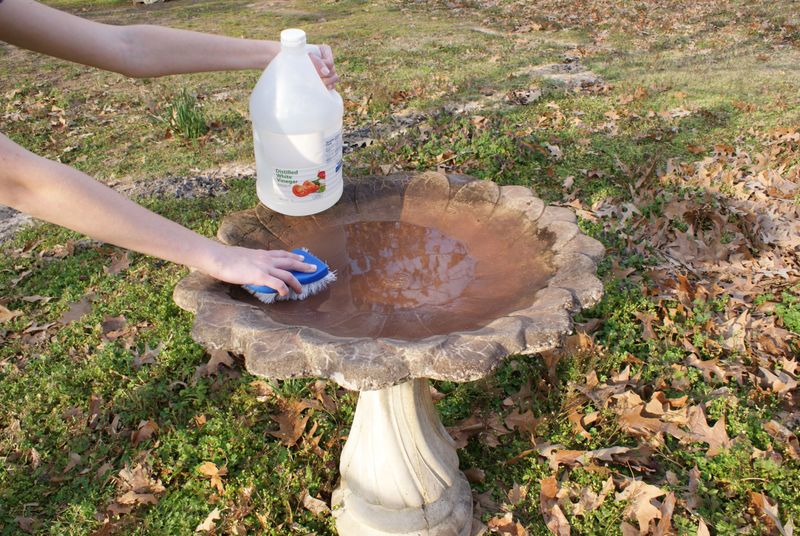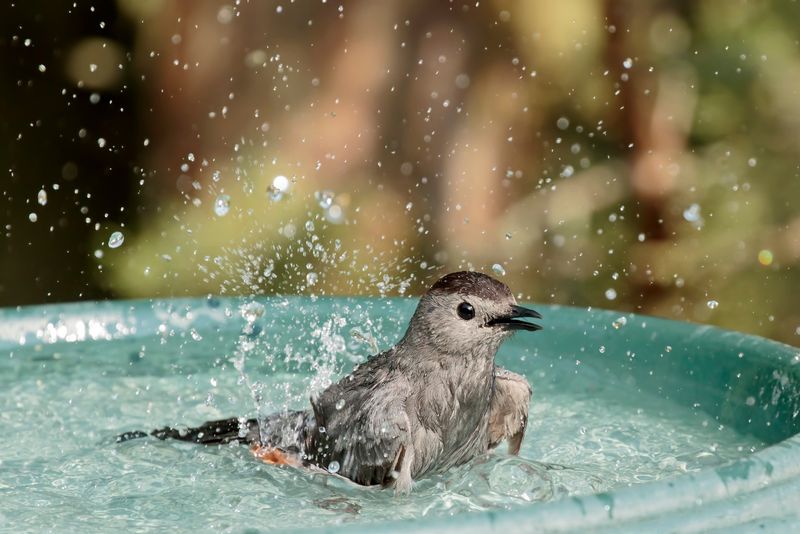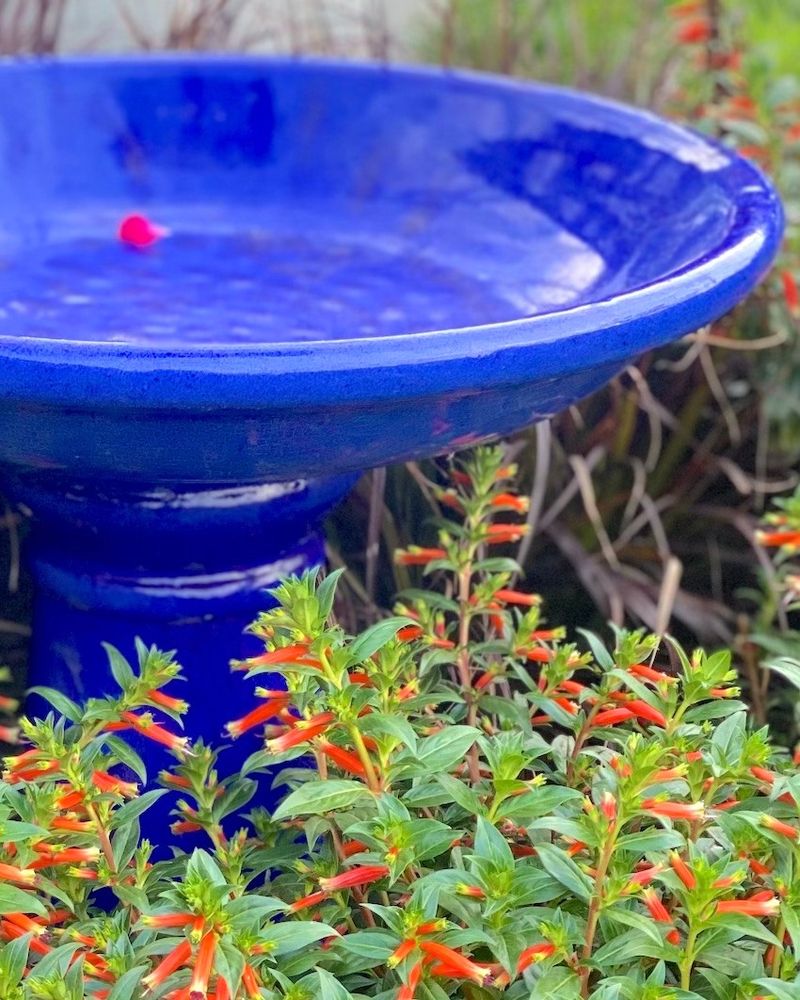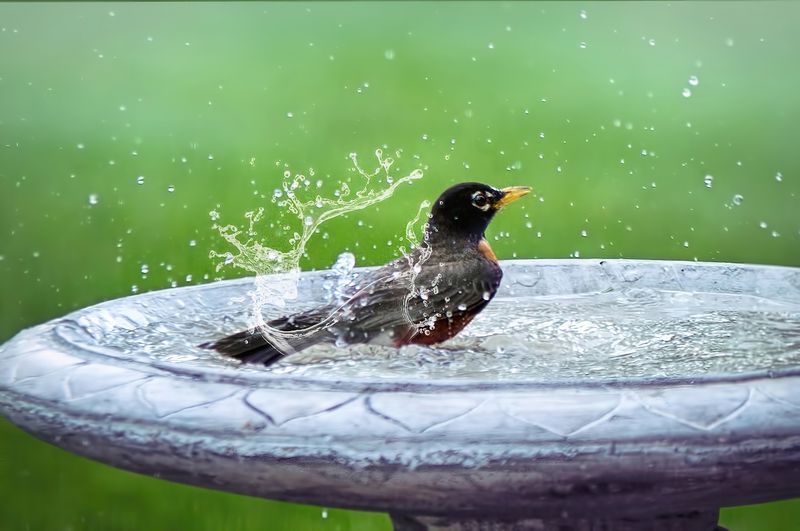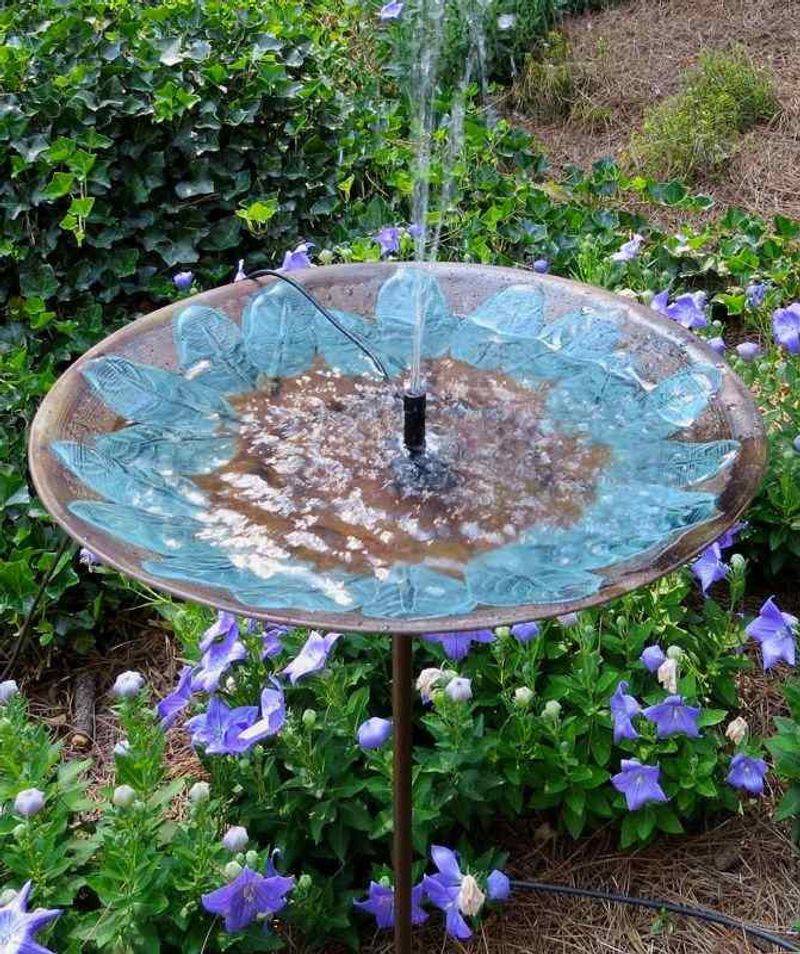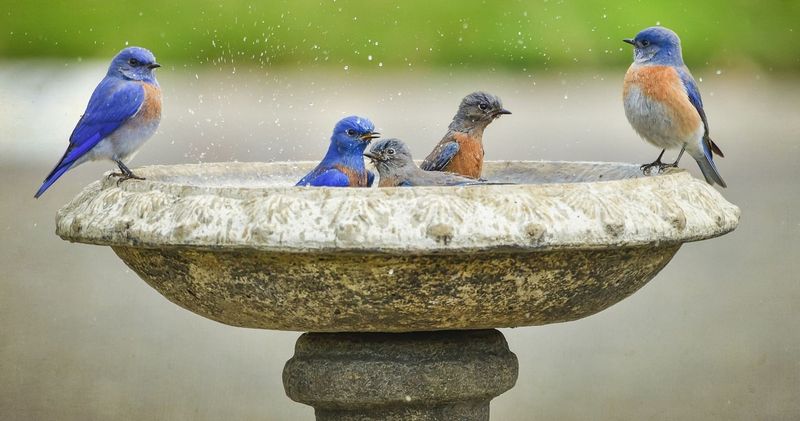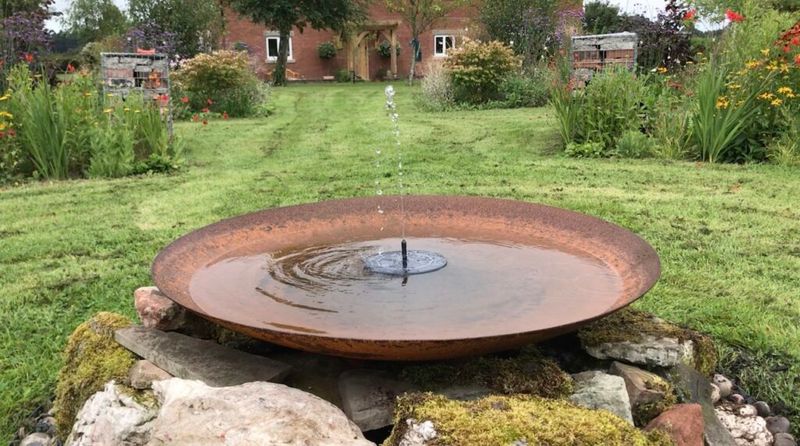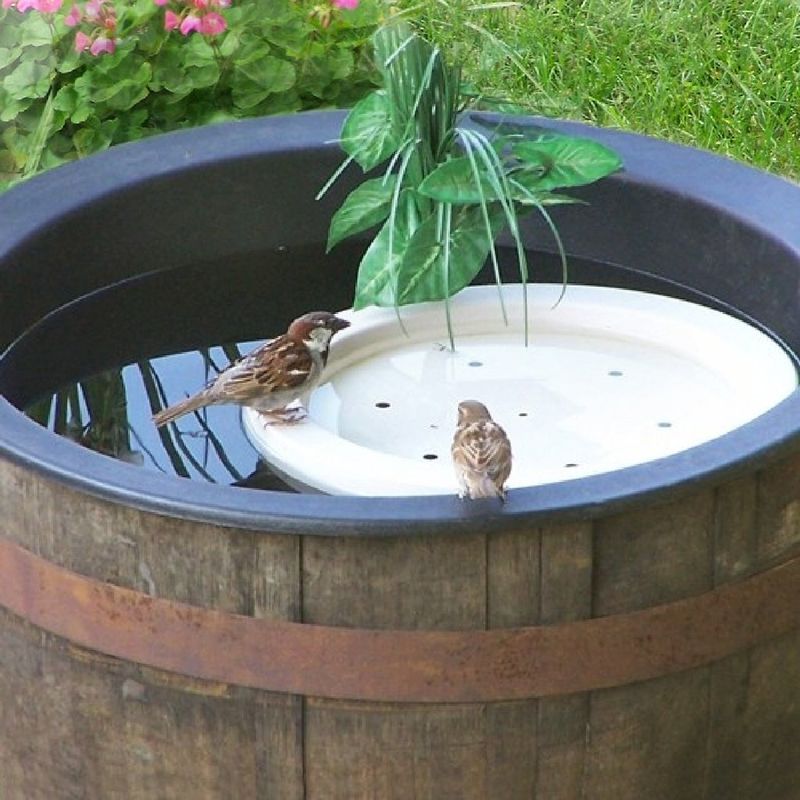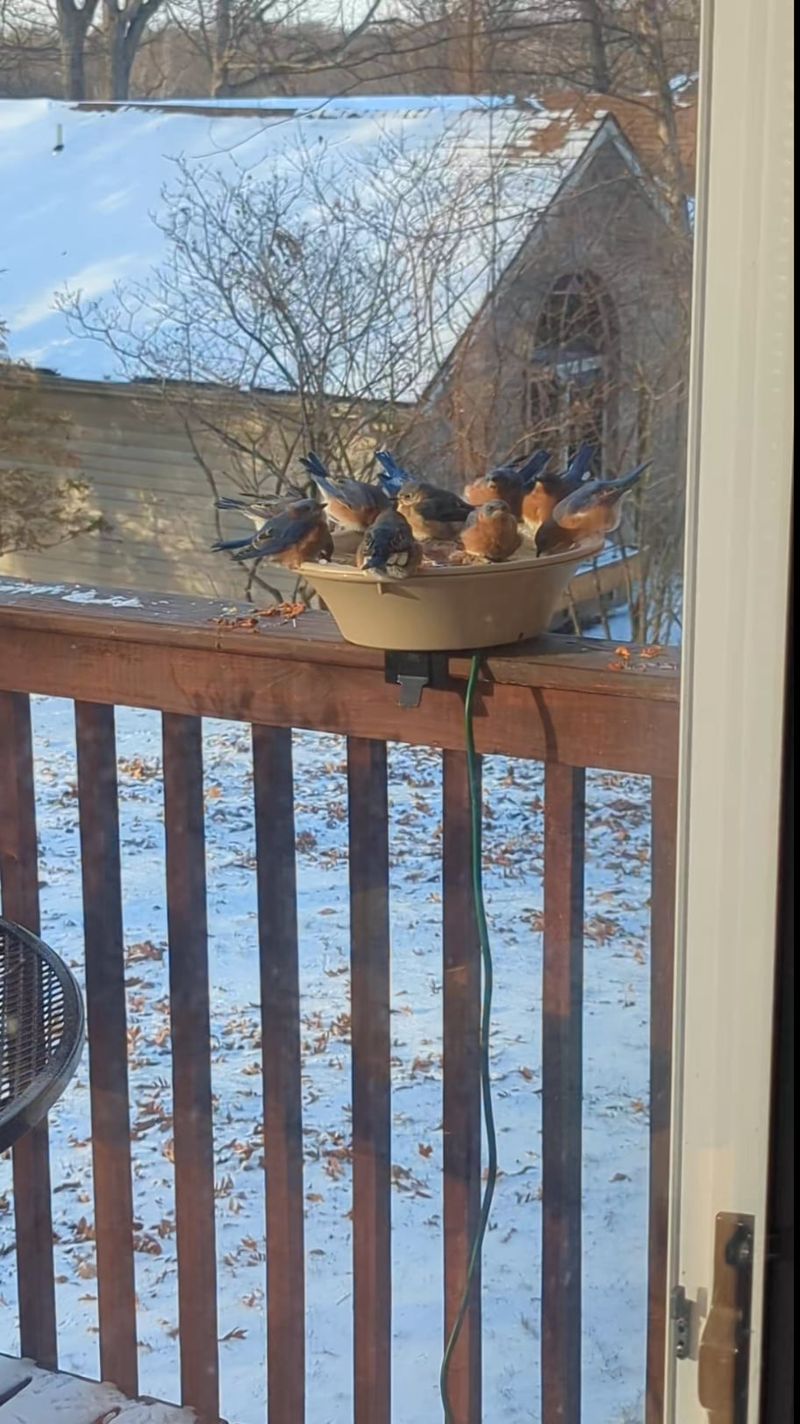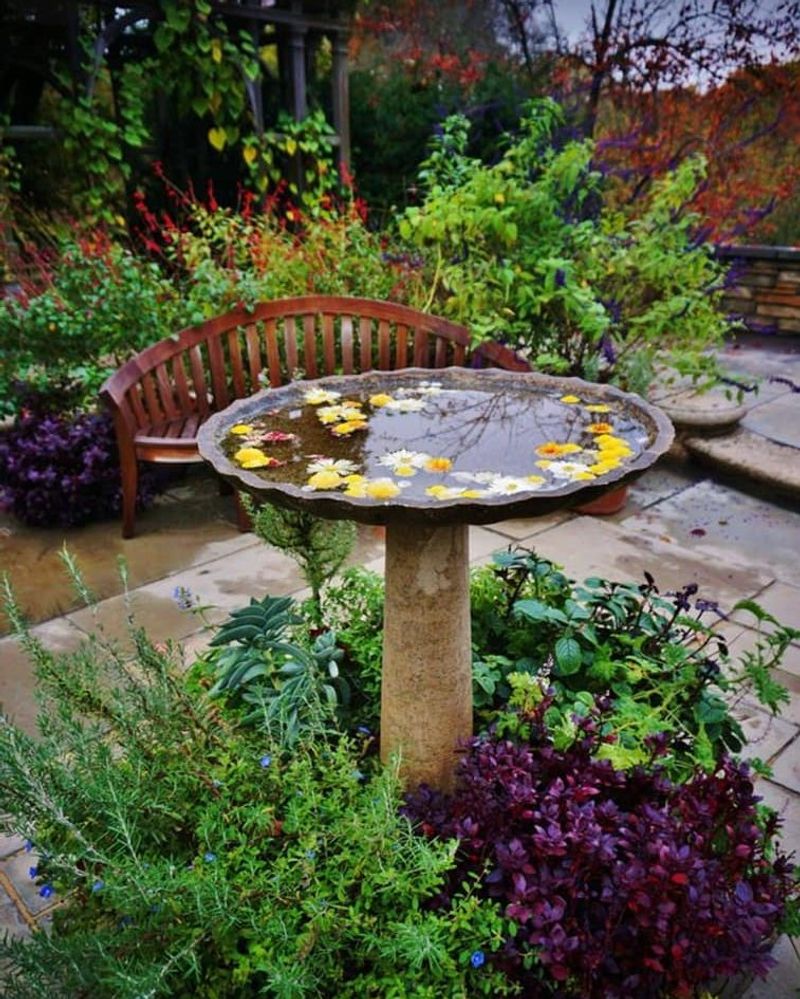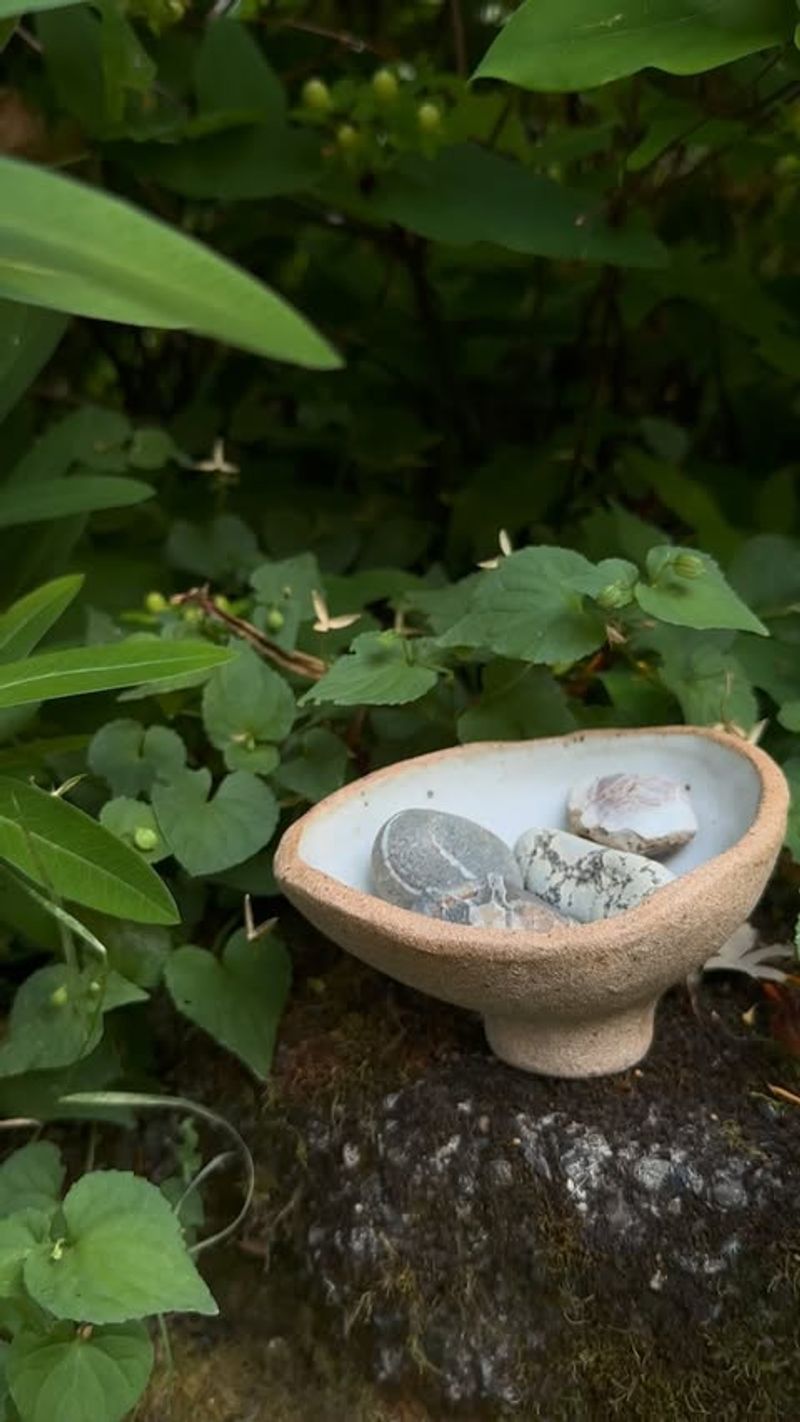Birds add a special kind of joy to our yards with their songs and bright colors. But sometimes, despite our best efforts, our birdbaths don’t get the visitors we hope for. It turns out, a few common misunderstandings about birdbath care might be keeping those feathered friends away.
I’ve learned that attracting birds takes more than just filling a bowl with water. Knowing what really draws them in—like clean water, the right location, and safe surroundings—can make all the difference.
Once you get it right, your backyard can become a lively bird hangout. It’s amazing how small changes can turn your birdbath into a bustling hotspot. With a little patience and care, you’ll soon enjoy the sights and sounds of happy birds splashing and drinking right outside your window.
1. Deep Water Attracts More Birds
Most birds prefer shallow puddles to deep pools. Anything deeper than 2-3 inches creates a drowning hazard for smaller species, making them avoid your bath entirely.
Small songbirds like chickadees and finches need just enough water to wet their feathers, not swim laps. They’re looking for security, not an Olympic-sized pool.
Adding stones or a gentle slope creates safe standing areas where birds can gradually move to their preferred depth.
2. Colorful Birdbaths Attract More Visitors
Bright colors might catch human eyes, but they often spook cautious birds. Flashy reds and yellows can signal danger in the natural world, making birds hesitant to approach.
Natural tones like gray, brown, or green blend with the environment and feel safer to wary avian visitors. Birds evolved to be suspicious of unusual or bright objects that might represent predators.
The water itself is the real attraction – not the container’s color. Focus on water quality and accessibility instead of decorative appeal.
3. Perfectly Still Water Is Best
Stagnant water actually repels birds. In nature, still water often harbors bacteria, parasites, and mosquito larvae – all potential health hazards for birds.
Moving water catches light, creating flashes that birds can spot from impressive distances. The sound of trickling or dripping water acts as a natural bird magnet, signaling fresh, safe drinking options.
Many species evolved to seek flowing streams and rain puddles rather than still ponds, making motion a powerful attractant in your yard.
4. Once-Weekly Cleaning Is Sufficient
Algae and bacteria multiply rapidly in outdoor water, especially during warm weather. A weekly cleaning schedule leaves birds with dirty, potentially harmful water most of the time.
Birds are surprisingly picky about water quality. They’ll bypass contaminated sources even when thirsty, instinctively avoiding potential illness.
Summer heat accelerates bacterial growth, sometimes making daily cleaning necessary. Your maintenance schedule should adapt to weather conditions rather than following a rigid calendar.
5. Adding Bleach Keeps Water Fresher Longer
Chemical additives like bleach can harm birds’ delicate respiratory systems and damage feathers essential for flight and insulation. Even diluted solutions pose significant risks.
Residue from cleaning agents clings to porous materials like concrete and ceramic, potentially transferring to birds during bathing. Their grooming habits mean they might ingest these harmful substances.
Natural cleaners like vinegar (thoroughly rinsed away) offer safer alternatives for maintaining hygiene without introducing toxins that could harm your feathered guests.
6. Birdbaths Need Full Sun Exposure
Direct sunlight quickly heats water to uncomfortable temperatures, sometimes exceeding 100°F on summer days. Birds avoid bathing in hot water that could stress their bodies.
Full sun exposure accelerates algae growth and water evaporation, creating maintenance headaches. Birds may find an empty or green bath when they visit.
Partial shade creates a more inviting microclimate around your bath. Morning sun with afternoon shade offers the perfect balance – visibility for birds with temperature moderation during peak heat.
7. Birds Will Find Any Water Source
Birds have specific criteria for selecting bathing spots based on safety, not just availability. A poorly positioned bath might remain unused despite regular bird activity nearby.
Predator vulnerability remains a primary concern for bathing birds. They need quick escape routes and visibility to feel secure, as wet feathers temporarily compromise flight ability.
Positioning matters tremendously – place baths near protective shrubs but not so close that predators can hide. The perfect spot offers both shelter and surveillance opportunities.
8. Ornate Designs Enhance Bird Enjoyment
Fancy birdbaths with steep sides, slippery surfaces, or complicated decorative elements create hazards rather than havens. Birds need secure footing while bathing, not artistic flourishes.
Elaborate designs often include narrow, deep bowls that limit perching options. Birds prefer wide, shallow basins with rough-textured surfaces that provide stable grip for their delicate feet.
Function trumps form in the bird world. Simple designs with gentle slopes and varied depths accommodate different species far better than Instagram-worthy artistic pieces.
9. Bigger Birdbaths Attract More Species
Massive birdbaths often intimidate smaller birds, who make up the majority of backyard visitors. Chickadees, finches, and warblers prefer modest-sized baths that feel safer and more manageable.
Multiple smaller baths actually accommodate more birds than one large option. They reduce competition and territorial disputes that occur when birds must share limited bathing space.
Size appropriateness matters more than sheer volume. A bath proportioned for your local species will see far more activity than an imposing centerpiece designed primarily for human admiration.
10. Water Depth Should Be Consistent Throughout
Uniform depth limits accessibility to birds of different sizes. Tiny wrens need puddle-depth areas while larger robins appreciate slightly deeper sections.
Natural water sources feature varied topography – birds evolved seeking these diverse bathing environments. The most popular wild bathing spots offer graduated depths to accommodate every preference.
Adding pebbles or stones creates a depth gradient, transforming a single bath into a multi-species attraction. This simple modification makes your bath accessible to the widest possible range of feathered visitors.
11. Add A Dripper For Instant Results
Water movement creates a powerful visual and auditory magnet for birds. A simple dripper transforms a ignored bath into a bustling avian social hub within days, sometimes hours.
Commercial drippers work wonderfully, but homemade solutions are just as effective. A recycled milk jug with a tiny pinhole suspended above your bath creates the perfect slow drip that birds find irresistible.
The gentle “plink” sound travels surprisingly far, drawing curious birds from throughout your neighborhood. It mimics natural rainfall, one of birds’ favorite bathing opportunities.
12. Create A Landing Zone
Birds rarely plunge directly into water – they prefer gradual entry points. Adding partially submerged rocks or branches creates natural perches where birds can pause before bathing.
These landing zones serve multiple purposes: entry points, preening spots, and social gathering areas. Birds often queue up on these perches, creating charming bathing parties in your yard.
Rough-textured surfaces provide essential grip for wet bird feet. Smooth glass or glazed ceramic baths become instantly more attractive with the addition of textured landing zones.
13. Maintain Year-Round Water Access
Winter water sources are incredibly scarce yet critically important for bird survival. When natural water freezes, heated baths become lifesaving oases that birds remember and return to repeatedly.
Heated options don’t need to be expensive. Simple immersion heaters or solar-powered models maintain small ice-free drinking areas even in frigid temperatures.
Birds form habits around reliable resources. Maintaining your bath through winter establishes your yard as a dependable sanctuary, increasing year-round bird activity and diversity.
14. Position At Ground Level
Ground-level baths mimic natural puddles that birds instinctively recognize as safe water sources. Many species, particularly ground-foragers like thrushes and sparrows, strongly prefer these lower options.
Elevated baths require more energy expenditure and create falling hazards for wet birds. Ground placement removes these barriers, especially for older or juvenile birds.
Predator concerns can be addressed through strategic placement near escape cover rather than elevation. A ground bath near dense shrubs offers both accessibility and safety.
15. Keep It Simple With Pebble Baths
Minimalist pebble baths outperform fancy commercial options for many bird species. A shallow dish filled with smooth stones and just enough water to create puddles between them perfectly replicates birds’ preferred natural bathing spots.
Pebbles provide secure footing and varied water depths simultaneously. Birds can splash in deeper pockets or simply wet their feet on damp stones according to their comfort level.
This approach reduces drowning risks for smaller birds and beneficial insects that might otherwise become trapped in deeper water. It’s nature-inspired design at its most effective.

